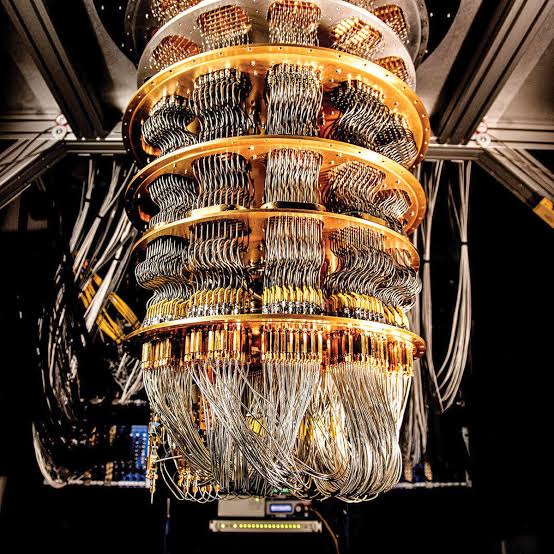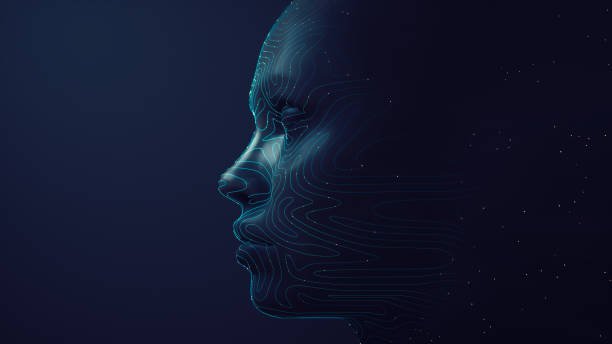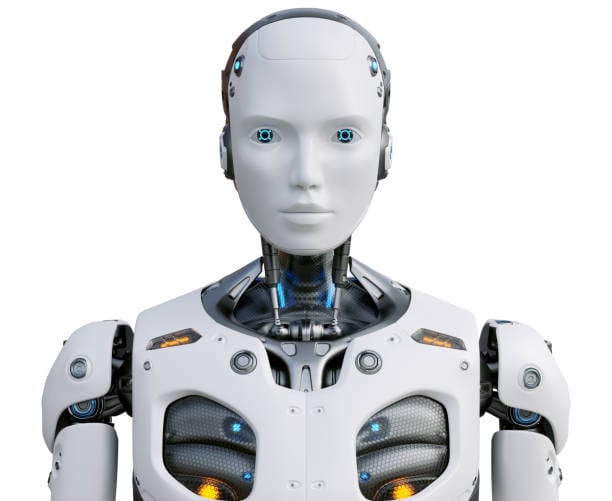For nearly a century, classical computing has fueled human progress. From the punch cards of the 1940s to the smartphones in our pockets, we’ve ridden the exponential wave of Moore’s Law—a doubling of transistor density every two years. But even the most intricate silicon chip, packed with billions of transistors, is running up against the limits of physics. At the smallest scales, classical logic starts to wobble. Electrons tunnel through barriers. Heat becomes unmanageable. The world of bits begins to look… too simple.
Nature, it turns out, doesn’t run on binary alone.
At the subatomic level, reality doesn’t behave like a spreadsheet. It dances. It flickers between states. It interferes with itself. It gets entangled. This is the world of quantum mechanics, and for decades it has both bewildered and inspired physicists. But now, out of the cloud of equations and paradoxes, something tangible is emerging—a machine built not just to simulate nature, but to embody it.
Quantum computing is not just a faster calculator. It’s an entirely new way of thinking, one that mirrors the deepest truths of the universe. And as we stand at the edge of this frontier, the implications are nothing short of revolutionary.
What Is a Quantum Computer, Really?
To understand what makes a quantum computer different, we must first unlearn the tidy world of ones and zeroes. In a classical computer, every piece of information is encoded in bits—tiny switches that are either on (1) or off (0). These bits are strung together into longer sequences that represent letters, images, sound, software, and everything else in the digital age.
Quantum computers, by contrast, operate using qubits. A qubit can also be in the state of 0 or 1—but thanks to a uniquely quantum property known as superposition, it can also be in both states at once.
Picture a coin spinning in the air. It’s not just heads or tails—it’s both until it lands. A qubit lives in this spinning state. But it doesn’t stop there.
Qubits can also become entangled. Entanglement is a mysterious quantum phenomenon where the state of one qubit becomes intertwined with another, no matter how far apart they are. If you measure one, you instantly know the state of the other, even across galaxies. Einstein famously called this “spooky action at a distance,” and to this day it defies classical intuition.
When you string qubits together in superposition and entanglement, something wild happens. The computational power grows exponentially. Two qubits can represent four possible states. Three can represent eight. A quantum computer with 300 qubits could theoretically hold more states than there are atoms in the observable universe.
This isn’t just speed. It’s parallel universes of possibility.
Programming the Uncertainty
But harnessing that power is fiendishly difficult. The quantum world is delicate. A single qubit can be disturbed by the smallest nudge—thermal vibrations, cosmic rays, electromagnetic fields, even the act of observation.
Quantum computers are not just built. They are carefully coaxed into existence inside ultra-cold chambers, often just above absolute zero. These environments isolate the qubits from the noisy chaos of the macroscopic world, allowing their fragile quantum states to survive just long enough to perform calculations.
Then comes the challenge of quantum gates. In classical computing, logic gates perform predictable operations on bits. Quantum gates manipulate qubits through rotations in multidimensional space—unitary transformations that respect the rules of quantum mechanics. These gates are applied in precise sequences called quantum circuits.
But here’s the twist: you don’t get a definitive answer until you measure the qubits. And once you do, the quantum state collapses. You no longer have the spinning coin—you have either heads or tails. The art of quantum computing lies in designing algorithms that extract useful results from this inherent fuzziness, amplifying the right probabilities and suppressing the wrong ones.
Shor’s Earthquake and the Power to Break Encryption
The world first sat up straight in 1994, when mathematician Peter Shor revealed a quantum algorithm that could factor large numbers exponentially faster than any known classical method. To most people, this sounded abstract. To cryptographers, it was a bombshell.
Why? Because modern internet security—everything from online banking to military communications—relies on the difficulty of factoring large prime numbers. RSA encryption, one of the cornerstones of digital security, is based on this hardness. A classical computer would need thousands of years to crack a 2048-bit RSA key. A quantum computer running Shor’s algorithm could do it in hours or minutes.
Suddenly, quantum computing wasn’t just a physics curiosity. It was a geopolitical game-changer. Governments and corporations began pouring money into quantum research. A race had begun—not to build faster gadgets, but to rewrite the rules of digital trust itself.
Grover’s Search and the Path to Speedups
Not all quantum algorithms are about breaking things. Some offer remarkable speedups even for problems not rooted in number theory.
Grover’s algorithm, for example, shows that a quantum computer can search through an unsorted database of N entries in roughly √N steps—far better than the linear scaling of classical search. This kind of advantage doesn’t sound dramatic, but for massive datasets, it’s profound.
Other quantum algorithms tackle everything from solving linear systems to simulating chemical reactions. One of the most promising applications is quantum simulation—modeling the behavior of molecules and materials at the quantum level.
Ironically, the best tool we have for understanding quantum systems… is another quantum system.
Chemistry, Medicine, and the Machines of Life
Consider the molecules that make up our world. Proteins, drugs, catalysts, materials—they all obey quantum rules. But simulating even a simple molecule like caffeine is beyond the capacity of classical supercomputers.
Quantum computers, however, speak the same language. They can model molecular interactions at the level of quantum mechanics, potentially unlocking new drugs, superconductors, and materials with properties we’ve never seen.
Imagine a world where pharmaceutical companies can discover new treatments in days instead of years. Where we can design fertilizers that don’t destroy ecosystems. Where we engineer materials that conduct electricity with zero loss.
This is not hype. These are real goals being pursued by companies like IBM, Google, IonQ, and startups across the globe.
Quantum computing may be the microscope that finally shows us the blueprint of the living world in full resolution.
Noise, Decoherence, and the Battle Against Fragility
Despite the promise, quantum computers today are nowhere near ready for widespread use. Most systems still operate in the realm of NISQ—Noisy Intermediate-Scale Quantum—meaning they have enough qubits to do something interesting, but not enough to correct their own errors reliably.
Quantum noise is a constant threat. Qubits lose coherence—meaning they decay into randomness—after microseconds. Errors creep into computations. Entanglement frays.
To truly unlock quantum computing, we need quantum error correction—a method of encoding logical qubits in layers of physical ones so that errors can be detected and fixed without measuring the quantum state directly.
This is like trying to catch whispers in a hurricane. It requires thousands of physical qubits for every logical one. It is the greatest engineering challenge of our time. But it is also being steadily chipped away by advances in materials science, cryogenics, control electronics, and theoretical breakthroughs.
Different Qubits, Different Paths
There’s no single way to build a quantum computer. In fact, there are multiple rival technologies, each with its own strengths and weaknesses.
Superconducting qubits, used by IBM and Google, rely on circuits cooled to near absolute zero. They are relatively mature and scalable but struggle with error rates and coherence times.
Trapped ion qubits, pursued by IonQ and others, use lasers to manipulate charged atoms suspended in electromagnetic fields. They offer high precision but are harder to scale.
Photonic quantum computers use particles of light, or photons, to encode qubits. They don’t require extreme cooling and are easier to move long distances, making them attractive for quantum networks.
Topological qubits, a more speculative approach championed by Microsoft, aim to braid exotic quasiparticles in such a way that information is protected from noise inherently. If they work, they could revolutionize the field. But they haven’t yet been realized.
No one knows which architecture will win—or whether multiple approaches will coexist. What’s certain is that the diversity of efforts is accelerating discovery.
Quantum Supremacy and the Road to Utility
In 2019, Google announced it had achieved quantum supremacy—a milestone where a quantum computer performs a task that no classical computer can feasibly replicate. Their machine, Sycamore, generated random numbers using a circuit of 53 qubits, completing the task in 200 seconds. Simulating the same output on a classical supercomputer would take 10,000 years, they claimed.
Critics debated the usefulness of the task. IBM countered that it could be done in days. But the symbolic moment had arrived. A quantum computer had stepped outside the shadow of classical machines.
Yet supremacy is not the same as usefulness. What the field now seeks is quantum advantage—real-world applications where quantum computers solve practical problems better or faster than any classical alternative.
That day is coming. The path may be longer than expected, but the destination remains profound.
The Ethical and Societal Implications
As with any powerful technology, quantum computing brings risks alongside rewards.
The most immediate concern is the future of encryption. If and when large-scale quantum computers become real, today’s cryptographic systems will be obsolete. Governments are already preparing for this post-quantum future, developing new encryption standards resistant to quantum attacks.
But deeper questions loom. Who will control quantum power? Will it be monopolized by tech giants or shared as a public good? Will it deepen inequalities between nations or help solve global challenges?
And then there’s the unsettling question: what happens when we can simulate everything? Will quantum computers, combined with AI, unlock understanding so fast that human minds can’t keep up?
These are not distant questions. They are the design decisions of today.
Quantum Computing Is Not Magic—But It Feels Like It
For many, quantum computing sounds like science fiction. And in a way, it is—because it is expanding the boundaries of what science thought was computable.
But let’s be clear: quantum computers won’t replace classical ones. You won’t run Netflix or check email on a quantum laptop. Quantum computers are specialists, not generalists. They solve specific classes of problems that are hard or impossible for classical machines.
And yet, their impact may ripple across every industry: finance, chemistry, logistics, energy, climate modeling, national security, AI.
At its core, quantum computing is not about faster chips. It’s about deeper insight. It’s about building machines that think, not like us, but like nature.






